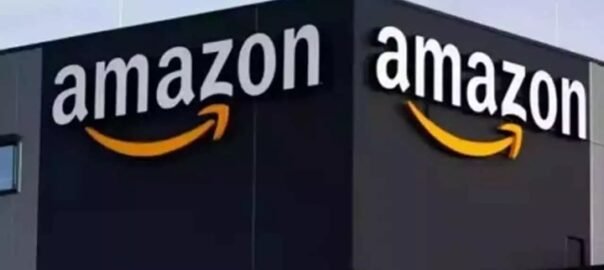Procurement is a strategic approach to sourcing and obtaining the goods and services a business requires to function effectively. Procurement is not just about purchasing but, involves recognizing needs, evaluating potential suppliers, negotiating agreements, and overseeing the entire lifecycle of acquired goods and services. The primary goal of procurement is to make sure the business receives the best value, quality and risk control for the organization.
Procurement is a broad domain, and it differs between the retail and e-commerce sectors.
Retail procurement involves acquiring products for brick and mortar, requiring effective coordination with local suppliers and instore inventory management to maintain consistent product availability. On the other hand, e-commerce procurement emphasizes streamlining the online supply chain, typically relying on centralized warehouses and efficient delivery logistics to fulfill customer expectations.
In the retail and e-commerce sectors, procurement plays a key role, directly affecting a company’s profitability, productivity and customer satisfaction. By effectively managing the procurement process, business can secure cost advantages, streamline supply chain performance, and ensure consistent access to essential goods and services, directly contributing to increased revenue, and long-term profitability.
Regardless of the channel, whether brick and mortar or online, businesses must carefully consider how and where they source their products. This throws light on the importance of local procurement.
Local Procurement involves sourcing goods and services from suppliers within a defined geographic region, emphasizing support for the local economy, strengthening community ties, and potentially lowering transportation costs.
Local procurement plays a vital role in the retail and e-commerce industries for several important reasons. First, it supports local businesses, which helps create job opportunities and strengthens the local economy. It also has a positive environmental impact, as goods sourced locally travel shorter distances, resulting in lower carbon emissions. Additionally, working with local suppliers can speed up the supply chain, offering faster delivery times and reducing the risk of disruptions caused by global events or long-distance transportation issues.
From a customer perspective, locally sourced products are often fresher and of higher quality, which enhances customer satisfaction and loyalty. Supporting local businesses also resonates with consumers, helping them associate the brand with community values and social responsibility, ultimately boosting brand recognition and reputation. Furthermore, local procurement can lead to long-term cost savings by reducing transportation expenses, improving supply chain efficiency, and fostering stronger relationships with suppliers.
According to the Business Research Company, the retail sourcing and procurement market has experienced rapid growth in recent years. The market is projected to increase from $5.61 billion in 2024 to $6.37 billion in 2025, reflecting a compound annual growth rate (CAGR) of 13.6%. This expansion has been driven by several key factors, including the growing digitalization of the retail industry, greater automation in procurement processes, and increased funding and investment in sourcing and procurement platforms.
As the industry evolves at this pace, organizations must build strong procurement foundations to remain competitive and responsive. This is where the 4P’s of procurement – Planning, Partnerships, Performance and Processes, play a crucial role. These four pillars provide a strategic framework to manage procurement effectively, ensuring it aligns with business goals, drives efficiency, and support sustainable growth.
- Planning- This stage involves developing a procurement strategy that details what items or services need to be acquired, the timeline for their purchase, and the sources or suppliers. It also includes identifying potential vendors, selecting appropriate procurement methods, planning for contingencies, and gaining a clear understanding of the projects overall scope.
- Partnerships- This emphasizes fostering strong relationships with suppliers and other stakeholders through collaboration. It involves understanding their needs and objectives and providing procurement solutions that support the achievement of those goals.
- Performance- This entails assessing the performance of the procurement function by measuring its efficiency and effectiveness in meeting objectives and supporting the organizations overall goals. It includes monitoring cost savings, operational efficiency, and alignment with strategic priorities.
- Process- This stage is about creating a clear streamlined procurement procedure to ensure a standardized and well-documented process. It covers key stages such as requirements planning, supplier selection, issuing purchase orders, and processing payments.
These four pillars of procurement are important for achieving effective and efficient procurement management. By concentrating on these key elements, organizations can streamline their purchasing processes, lower costs, strengthen supplier relationships, and enhance overall supply chain performance.
Building on the 4P’s of procurement, organizations can develop a comprehensive procurement strategy that aligns with their overall business goals. While the pillars provide the operational framework, focussing on process efficiency, cost management, supplier relationships and supply chain performance. A well-crafted procurement strategy ensures that these elements are integrated into long term planning.
A Procurement Strategy serves as a roadmap that outlines how an organization will acquire the materials and resources necessary for its operations, ensuring that all procurement activities are aligned with the organizations business goals. A procurement strategy entails what goods and services an organization requires and outlines the process for identifying and assessing potential suppliers based on their capabilities. It involves negotiating and establishing mutually beneficial agreements, as well as fostering strong supplier relationships to promote ongoing collaboration and support. The strategy also includes setting clear terms and conditions for supply, identifying potential risks, such as supply chain disruptions or price volatility, and implementing measures to mitigate them. Finally, it emphasizes monitoring supplier performance and continuously refining the strategy to adapt to changing needs and conditions.
A strong procurement strategy has numerous benefits like reduced costs, by enabling better supplier negotiations, securing volume discounts, and optimizing overall spending. Strengthening supplier relationships results in improved service quality, reliability, and collaboration. Additionally, a strong procurement strategy enhances risk management by diversifying suppliers and establishing contingency plans to address financial, operational, and reputational risks. Streamlining procurement processes and leveraging automation and data analytics improve efficiency and free up resources for innovation. With greater visibility into spending patterns, organizations can better control costs and identify areas for improvement. A well-structured strategy also promotes transparency, ensures regulatory compliance, and supports ethical and sustainable sourcing practices. By aligning procurement with broader business and sustainability goals, organizations gain a competitive edge, boost innovation, and build a more resilient and adaptable supply chain. In doing so, they position themselves for long-term growth and stability.
To fully realize the benefits of a well-defined procurement strategy, organizations must leverage the right tools and technology. This is where software procurement comes into the picture.
Software Procurement is a vital cog in the procurement process. It is the process of obtaining the software an organization requires, covering every stage from identifying specific needs and selecting appropriate solutions to purchasing the software and managing ongoing vendor relationships. It is crucial as it greatly impacts an organizations operational performance, cost efficiency, and overall business success. By securing the right software solutions at the best value, aligning them with business goals, and managing them effectively throughout their lifecycle, it helps drive both strategic and financial objectives.
According to the Business Research Company, the global software procurement market has experienced significant growth in recent years. It is projected to increase from $8.65 billion in 2024 to $9.85 billion in 2025, reflecting a Compound Annual Growth Rate (CAGR) of 13.9%. This expansion is driven by factors such as improved accuracy of procurement data, a rising focus on sustainable purchasing practices, the growing need for procurement automation, enhanced supply processes, and increasing demand for e-procurement solutions.
While software procurement ensures organizations acquire the right digital tools to support their strategic and operational needs, it is only one facet of a comprehensive procurement strategy. Another equally critical component is inventory control within procurement.
In procurement, inventory control focusses on managing inventory efficiently to balance customer demand, cost reduction and ensure order fulfilment are done on time. This process involves tracking stock from acquisition to sale, ensuring there is enough to meet orders without overstocking or risking items becoming outdated.
Effective inventory control is closely tied to strong vendor relationships. To maintain optimal stock levels and ensure timely replenishment, businesses must rely on dependable suppliers. This makes vendor management a critical component.
Vendor Management involves choosing the right suppliers, negotiating contracts and securing the best deals, evaluating performances, fostering long- term partnerships to ensure a steady supply of inventory and enhance overall operational efficiency.
As vendor management evolves, technology plays an increasingly important role in optimizing procurement activities. This is where E-Procurement comes in.
E-Procurement systems streamline the sourcing, ordering, and purchasing processes by automating workflows, improving transparency, and enhancing collaboration with suppliers. These digital tools support more efficient vendor interactions, reduce manual errors, and provide real time insights that drive smarter purchasing decisions.
In conclusion, procurement is a vital strategic function that goes beyond purchasing, it encompasses planning, supplier partnerships, performance evaluation and streamlined process that drive business success. In both retail and ecommerce sectors, procurement directly influences profitability, efficiency, and customer satisfaction. Emphasizing local procurement further strengthens community ties, reduces environmental impact and improves supply chain resilience. A well-defined procurement strategy, grounded in the 4P’s – planning, partnerships, performance and processes, ensures alignment with business goals, fosters strong supplier relationships, and proactive risk management. As technology reshapes the procurement landscape, tools like software procurement and e-procurement systems are essential for achieving operational efficiency and strategic agility. Moreover, effective inventory control and vendor management ensure consistent supply and cost efficiency. As the global procurement market continues to grow rapidly, organizations must innovate and adopt holistic procurement practices to stay competitive and resilient. Ultimately, procurement serves as a powerful lever for driving long-term growth, sustainability and organizational success.










